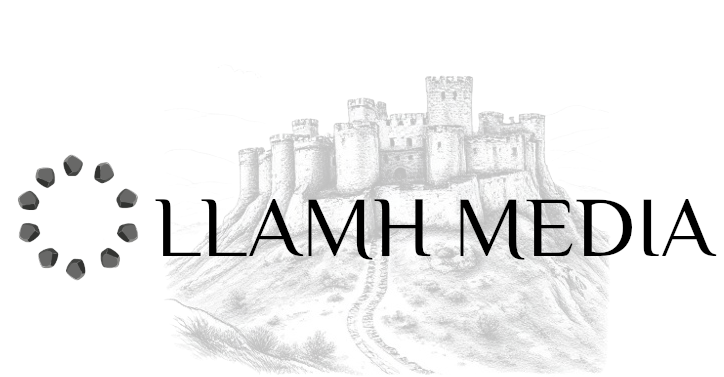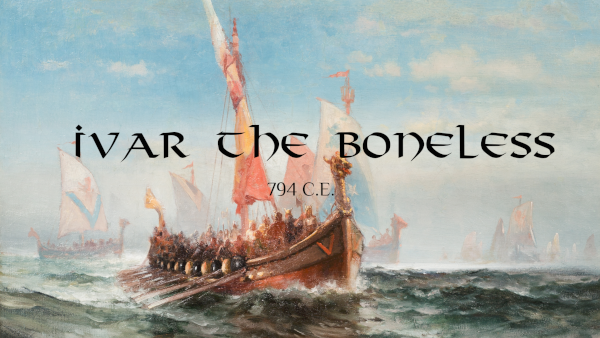Ivar the Boneless was a Viking chieftain, of Danish origin. A personality surrounded by legend. He undoubtedly had a lasting effect upon the bio-culture of Britain and Ireland. Unlike those who had come before him, Ivar was more a conqueror than a raider. He will forever be remembered as the leader of “The Great Heathen Army”, who arrived on British shores setting out to avenge the death of his father Ragnar Lothbrok.
The Early Life of Ivar the Boneless
As mentioned previously, Ivar the Boneless was the son of the Danish king Ragnar Lothbrok. However, details of his early life are relatively unknown. However, there are a litter of accounts scattered throughout certain annals suggesting that he was the leader of an expedition near the mouth of the river Thames.
It was not only Britain, Ivar had his sights upon. He is famous also for his exploits across the Irish Sea. Ivar is mentioned to be the companion of Olaf the White, known to history as the Danish king of Dublin. Ivar and Olaf formed short-lived alliances with certain Gaelic rulers during the 850s. The county of Meath was plundered and campaigned against because of such an alliance.
The Great Heathen Army
Anyone with an interest in history, will have surely heard of “The Great Heathen Army”. A title bestowed upon Ivar and his brothers by Christians who lived in Britain. Ivar’s motivation in Britain was to avenge his late father. Ragnar was captured while raiding Northumbria and was cast into a pit full of venomous snakes by order of the Northumbrian king Aella. The Great Heathen Army first landed in the kingdom of East Anglia. They successfully removed all those in their way until they eventually captured Northumbria’s capital city York in 866. King Aella, the man responsible of Ragnar’s death was captured in March 867. King Aella received no mercy, he was subjected to a particularly gruesome torture-execution, now commonly known as a “blood-eagle”.
The Death of Ivar the Boneless
By 871, Ivar, having conquered Northumbria, Scotland, Mercia and East Anglia returned to Ireland with 200 ships and a great number of captives of Angles, Britons and Picts. According to the saga of Ragnar Lothbrok, before he died, supposedly peacefully, Ivar ordered that his body be buried in a mound on the English shore.
His obituary is recorded in the Irish Annals in the year 873, reading simply “Ivar King of all the Norse of Ireland and Britain, ended his life.” There is no mention of how he died, or whether he was in Dublin when he died. Ragnar Lothbrok’s saga says he was buried in England.
Ivar the Boneless & Bio-Culture
It is without doubt, Ivar the Boneless has had a tremendous effect on the Bio-Culture of Britain and Ireland. The man who would indelibly mark these Islands with a small, though significant Viking heritage. DNA studies have shown that 6 percent of those living in Britain and Ireland have Viking DNA, comparable to 10 percent in Sweden. This is an incredible amount of people whose ancestors may have fought alongside Ivar against the natives.
In Ireland, the city of Dublin is known to have been a viking city. The Gaels previously would have seen sites such as Armagh and the Hill of Tara to be their capitals. However, after the settlement of Dublin was founded, power and attention slowly shifted further south.
The Viking era would come to an end in 1066, with the arrival of the Normans. The Normans themselves of mixed Brythonic and Viking stock. However, it is largely accepted that the Normans had carved themselves their own identity and ousted the Viking and Anglo-Saxon powers present in England. They would later go on to bring the majority of Britain and Ireland largely under their own control.
One thing, that cannot be overlooked and is sometimes rarely considered. The virility associated with the Viking invasions must of ignited the spirit of the crusades and imperial conquests of the British Empire.

